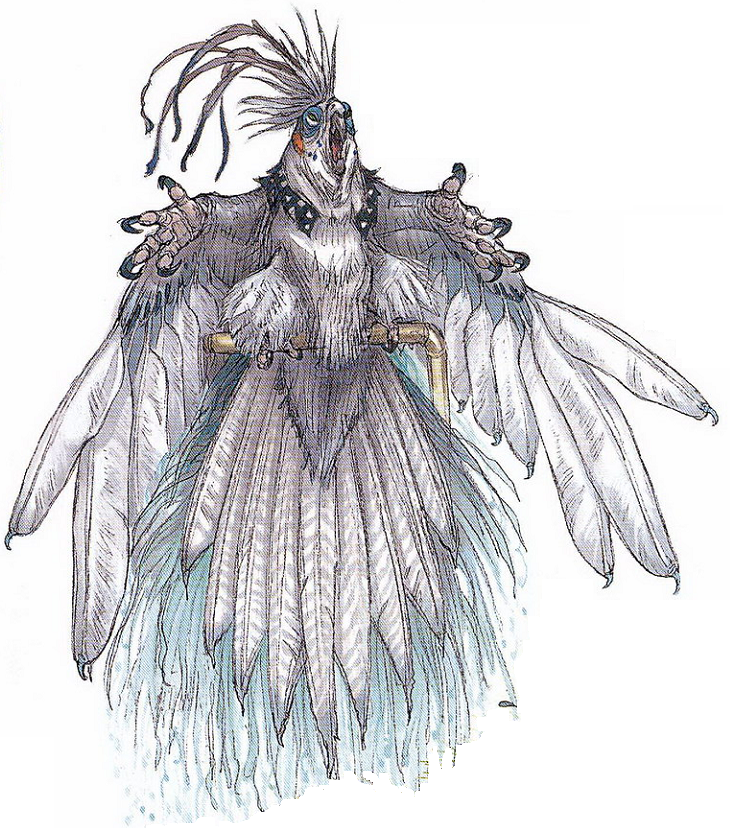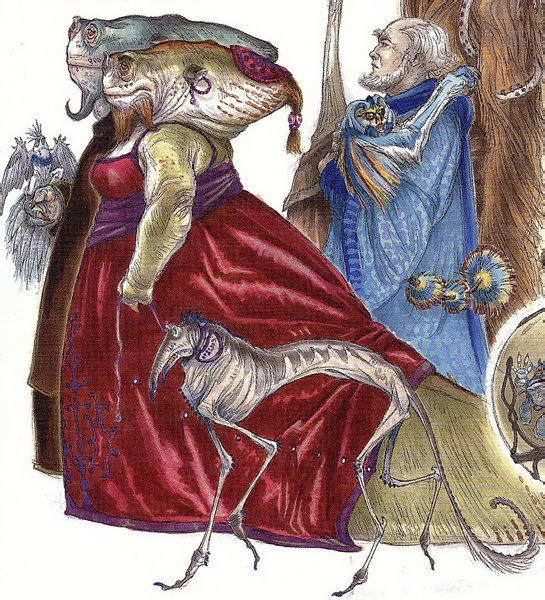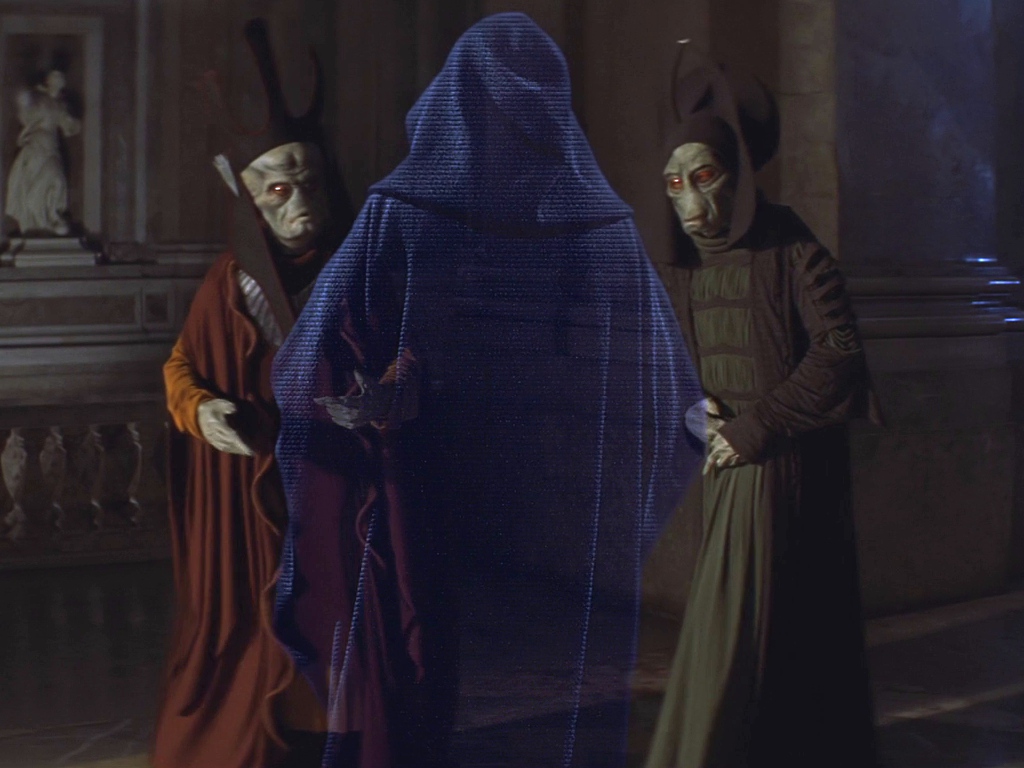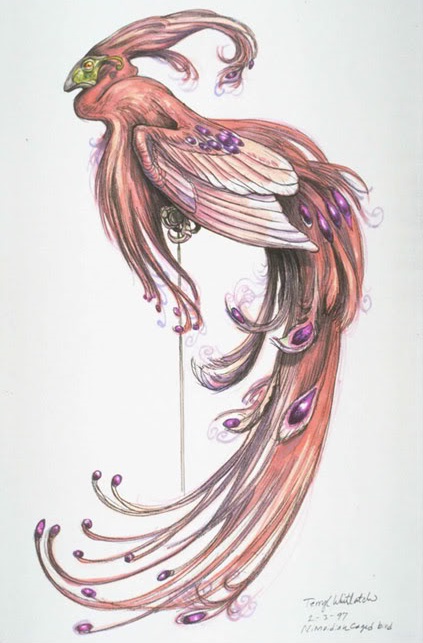The Neimoidian pylat bird, also referred to as pylat bird or just pylat, was a species of non-sentient avian from Neimoidia. Because of their white plumage and harmonious song, pylats were prized cagebirds among the richer members of the galactic community. The status-obsessed Neimoidians in particular considered the possession of pylats as an outward sign of power and wealth. A rare breed with red-spotted plumage also dwelled on the moon of Sojourn. The latter breed was looked at with even more envy, and the gift of one such pylat played an instrumental role in forging the alliance between Darth Sidious and the Trade Federation.

A clawed pylat bird.
Pylats were medium-sized, non-sentient avians native to the mountains of Neimoidia. They had four limbs: two legs and two wings that doubled as arms, the first joint of which was tipped with a four-fingered clawed "hand." The top of their head was crowned by a showy and prominent feather crest. Most commonly, pylats had a predominantly white plumage with colored features in the crest, cheeks and neck. They also had a long and broad tail that could be white or display darker colors. A rarer breed dwelling in the forests of Sojourn sported a red-spotted white plumage.Being birds, the pylats produced eggs that developped and hatched outside the maternal body, and were endothermic creatures, burning food within themselves to control their body temperature.

A Sy Myrthian with a pylat on the hand
In their natural environment, the pylats used their prominent headcrests for display purposes. While they were very defensive of their territory, they were considered attractive by bird enthusiasts, and could be domesticated. Their song was very harmonious and soothing to the ears—so much that one could use the quality of a pylat's song to assess its general level of contentment.Pet pylats could be confined in special cages fitted with stasis field generators, although some owners would take their bird for a walk while carrying on the hand.
The common pylat birds evolved on Neimoidia, a planet located in the Colonies region of the galaxy. The sentient inhabitants of that world, a Near-Duros species called the Neimoidians, came to associate the pylats with wealth and status, creating covetousness amongst those who did not possess such birds. Their fatty eggs were also a delicacy in Neimoidian cuisine. At some point in history, the pylat also found their way to Sojourn,a moon located in the Outer Rim Territories, where they evolved into a distinct breed.

The gift of a pylat bird helped forge the alliance between Darth Sidious and the Trade Federation.
Because of their white plumage and soothing song, the pylat birds were prized as pets by the wealthier beings of the galaxy. During the last decades of the Galactic Republic, a red-spotted pylat became part of a plot that ultimately sealed the galaxy's fate. Wishing to ally themselves with the Trade Federation in order to bring their Grand Plan to fruition, the Dark Lord of the Sith Darth Plagueis had a pylat bird from Sojourn delivered to Nute Gunray, Viceroy of the Trade Federation. At first, the rare bird confused Gunray, who could not track its origin, but he was pleased with the gift and it soon occupied pride of place in his office, and Gunray savored the envy of his colleagues had for the bird.
Shortly afterwards, Plagueis' apprentice Darth Sidious—whose public face was that of Senator Palpatine of Naboo—then contacted Gunray by holo and claimed responsibility for sending the bird, which then opened a broader discussion. Because Gunray was unfamiliar with the powers of Sith Lords, Sidious threatened to demonstrate them by killing the pylat from a remote location. Gunray soon saw the advantage of complying with Sidious' will. However, Sidious and Plagueis had actually fooled Gunray completely. It was not actually a bird from Sojourn, but rather a clone of a red-spotted pylat from Sojourn created on Kamino—one of the many tests Plagueis had the Kaminoans perform in preparation for the eventual order of an army of clones.
Later, when the Federation blockaded Naboo under Sidious' orders, Gunray had several caged pylats in the conference room of his flagship, the Saak'ak. When he flooded the room with poisonous gas in a failed attempt to murder Jedi Master Qui-Gon Jinn and his Padawan, Obi-Wan Kenobi, the birds dropped dead in their cage, giving the Jedi a visual cue of the danger.
Despite their long-established popularity amongst the socialites, pylat birds were never displayed at the Coruscant Livestock Exchange and Exhibition until after the establishment of the New Republic in 4 ABY. Following exhibition there, a Sy Myrthian diplomat had a pet pylat bird. The illustrious zoologist Lyrre T'enna made on-the-fly renderings of pylats that were included in the published edition of her field guide.

Terryl Whitlatch's concept art of a "Neimoidian Cage Bird"
Several exotic cagebirds were first slated to appear in the 1999 movie Star Wars: Episode I The Phantom Menace. They were to appear at the beginning of the movie, during the scene where the Jedi ambassadors notice the presence of poisonous gas in the conference room. The pylats were supposed to drop dead in their cages, alerting the Jedi of the gas attack. However, the movie staff ended up judging that the presence of birds in a negotiation room during a blockade did not look appropriate, and neither was the idea that Jedi needed this to detect gas. While that footage was left on the cutting room's floor, it was still present in Terry Brooks' novelization of The Phantom Menace, which was released shortly before the movie itself. Original production artwork by Terryl Whitlatch dated February 1997 depicted the Neimoidian birds as phoenix-like creatures displaying flowing red feathers with eye-shaped purple spots.
The exotic birds cut from The Phantom Menace were first shown in their current appearance and identified as "pylat birds" in Star Wars: Episode I The Visual Dictionary, written by David West Reynolds. According to the fan website T-Bone's Star Wars Universe, Reynolds derived that term from the name of Laura Pylat, one of his good friends from the University of Michigan.
In the 2000s, Neimoidian bird cages could be purchased in the Star Wars-themed MMORPG Star Wars Galaxies, but those were empty. Once again, the pylat did not make the final cut. They did, however, make the final cut of the 2012 novel Darth Plagueis, where they were mentioned by name, and were key to the first face-to-face holovid between Nute Gunray and Darth Sidious.
- Star Wars: Tiny Death Star
- Star Wars: Episode I The Visual Dictionary
- The Wildlife of Star Wars: A Field Guide
- Star Wars: The Complete Visual Dictionary
- The Complete Star Wars Encyclopedia